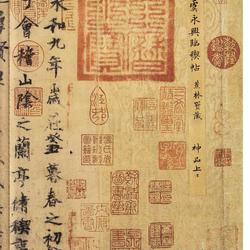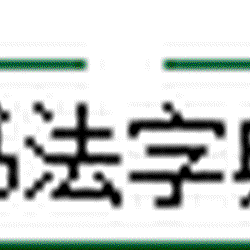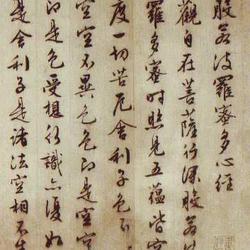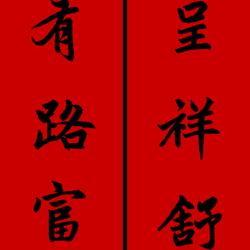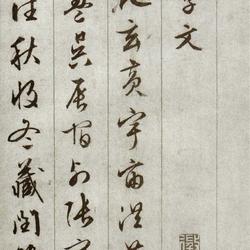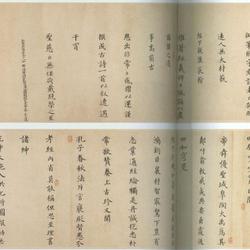Table of contents:
1. Humanity
1. “Poetry is the soul of a book.”
2. "Literature is the foundation of books."
2. Philosophy
3. Traditionality
1. Calligraphy is methodical
2. About inheritance
3. About innovation
4. Aesthetic characteristics
1. The claws of the dragon in the clouds are not blurry
2. "Books are paintings from the heart"
3. "Books are more valuable than people"
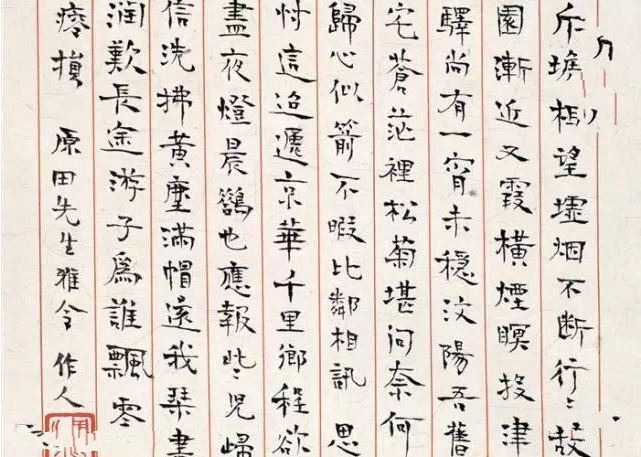
Appreciation of Zhou Zuoren's calligraphy
As a unique art of the Chinese nation, calligraphy enjoys a high cultural status in China. It is loaded with rich cultural psychology and humanistic information and has lasted for thousands of years. In addition to her perfect art form embodying the basic characteristics of Chinese art, more importantly, the spiritual power contained in calligraphy has the power to determine and guide the elements of. This is the soul of calligraphy. In religion, the soul is considered to be an immaterial thing that exists independently without the human body. Once the soul leaves the human body, the person dies. The same is true for calligraphy. If you lose her soul, you will undoubtedly face death. What is the soul of calligraphy? This soul is Chinese culture and Chinese spirit. It should include elegant humanities, profound philosophy, rich tradition, and unique aesthetics.
1. Humanity
Calligraphy has been deeply marked by Chinese culture from the day it was born. Some people say that calligraphy is the core of Chinese culture. I think culture is the core of calligraphy. Why? Because both the birth and development of calligraphy revolve around the core of culture. The study of calligraphy techniques and the aesthetic appreciation of calligraphy lines are only superficial understandings of calligraphy. True understanding is the cultural connotation hidden in Chinese calligraphy, a mystery beyond strokes, and a profound and endless cultural world. Therefore, without the concept of culture, calligraphy will lose all its dazzling brilliance.
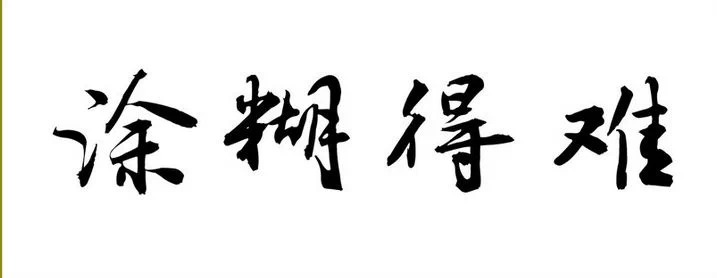
1. “Poetry is the soul of a book.”
As we all know, China is the country of poetry, and poetry is the soul of all Chinese art. Su Shi said: "Poetry cannot be exhausted. It overflows into books and changes into paintings. They are all poetry." This is a general explanation of Chinese art. The poem is the content and the book is the form. His writing is his soul and his writing is his body. Therefore, it is said that "poetry is the soul of books", or "text is the soul of books". Once I asked Mr. Wen Huaisha, a master of traditional Chinese culture, how to improve his calligraphy skills. Wen Huaisha whispered to me three words: "Recite Tang poetry." I think it makes perfect sense. why?
First, poetry (which can be understood as poetry in a broad sense including literary forms) is the basic content of calligraphy art. Ancient books say: "Poetry expresses ambition and sings of emotion." The realm of poetry expresses life, and the realm of calligraphy also expresses life. Therefore, the ancients commented on calligraphy as "expressing its nature, situation, and sorrow and joy." Calligraphers express human emotions while singing, ink and dancing. Beautiful calligraphy works must be the vitalization of the rhyme of lines and ink and the shaping of life. You can take a look at our calligraphers. Whether they are written by themselves or written by others, they always love to "write" poems. And it has to be Chinese poetry. Since Sun Guoting, the artistic way of thinking that combines poetry and calligraphy has long been deeply rooted in people's hearts. Sun Guoting said in the "Preface to the Book of Records": "Emotions move the words, taking the meaning of being coquettish." He was particularly opposed to the "principle of using hands to make luck", thinking that it was "vulgar".
Secondly, poetry dominates the artistic conception of a calligraphy painting. I think what is good calligraphy, it must have literary associations, artistic conception of poetry, composition of paintings, rhythm of dance, rhythm of music, and perfection of posture. Shen Yinmo once said: "There is no color but the brilliance of pictures, and there is no sound but the harmony of music." Calligraphers all come from poetry. Different poems lead to different books. The poetic mood in the calligrapher's heart drives the calligrapher's pen to compose works of different moods. For example, in Su Shi's "Plum Blossom Tie", when writing to the end, he suddenly started to write wildly, which is determined by unrestrained poetry. In his "Cold Food Post", he wrote, "I want to cherish spring every year." The word "Nian" breaks the pattern and is suddenly made into a big character, borrowing from Kuangcao's composition. It can be seen that poetry leads the writing. Since Zhang Huaiguan proposed "concurrent writing and ink" in "Shu Yi", calligraphers of all dynasties have attached great importance to it. Throughout history, all great calligraphers are without exception great poets, great writers, and great scholars. They are some accomplished and accomplished people. To put this in reverse, if you are not a great scholar or a great writer, you will definitely not become a great calligrapher. It can be said that what our contemporary calligraphers lack is precisely the skills of "concurrent writing and ink". If a calligrapher does not have profound literary accomplishment and extensive cultural literacy, he will not be able to improve his calligraphy skills. I once said, "The depth of calligraphy is culture, and the perfection of calligraphy depends on cultivation." Calligraphy skills can be infinitely close through practice, and the richness of the soul is endless. The improvement of spiritual character and cultural literacy seems difficult and slow compared with the learning of skills. The impetuousness and eagerness for success in the book world should also be related to this. Therefore, it is said that calligraphy is "easy to learn but difficult to master". When Huang Tingjian commented on Su Shi's calligraphy, he said, "The spirit of intellectual writing is so vivid between the pen and ink that others can never catch it." What others cannot match is Su Shi's elegant literary temperament.
The three poems can make calligraphy gradually better. Chinese calligraphy studies the charm, pays attention to the ethereal, which can transcend the troubled life of the world. Wang Wei said in his poem: "The shadow returns into the deep forest and shines again on the moss." It is talking about a feeling, a very slow moving feeling. This kind of feeling can't be found in calligraphy. If you can't find it in calligraphy creation, you can find it in poetry, and it will in turn help our creation. Calligraphy creation is a kind of lyricism, and it is also a process of searching full of poetry. If you cannot be intoxicated and immersed in the pen and ink and self-experience, you will not be able to enter. When you enter the realm of poetry, where the cultural spirit flourishes, general skills and kung fu are no longer obstacles. Without the realm of poetry, no matter how solid your basic skills are or how skilled your skills are, if you want to enter the realm of poetic calligraphy, you must impossible.
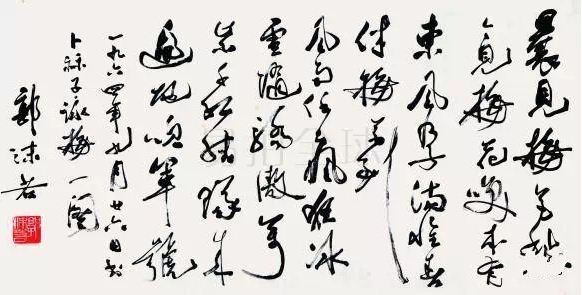
Guo Moruo calligraphy
2. "Literature is the foundation of books."
Characters are the basis of calligraphy, and "literacy and hyphenation" are the prerequisite for writing. This alone limits calligraphy to the circle of literati; literature is the ladder for the progress of calligraphy, and "artistic cultivation" is when calligraphy enters the aesthetic realm and reaches emotional experience. A bridge, literati is both a necessary condition and an innate advantage for calligraphy. Only the combination of literati and calligraphy can make calligraphy enter the palace of art. Calligraphy, from the day it was created, has always been accompanied by the rise and fall of literati. Chinese literati as a class first appeared in the "Hundred Schools of Thought" period of the Pre-Qin Dynasty. Most literati have delicate emotions, rich inner worlds, and "dual nature" of personality. Literati throughout the ages have always been fond of calligraphy, whether they were "proud" or "frustrated". Let's talk about two famous writers, such as Mi Fu, who was a scholar with a turbulent heart. After he was unsatisfied, he studied the calligraphy of the ancients on the one hand, and acted freely on the other, becoming the four great masters of the Song Dynasty. Yu Shinan of the Tang Dynasty had a smooth life and had a close relationship with Emperor Taizong of the Tang Dynasty. He was both devoted to politics and forgetful about calligraphy, and became a great master of his generation. It can be seen from this that calligraphy can not only become an angel for the frustrated, but also a comfort for the successful when they are mentally exhausted. The art of Chinese calligraphy has become such an "angel" and "best friend" among ancient literati. It can even be said that they found their "self" in the art of calligraphy and thus gained a supreme spiritual satisfaction. We can see the indissoluble bond between literati and calligraphy from at least three aspects.
First, calligraphers are all literati. In the history of Chinese calligraphy, the first recognized calligrapher is Li Si of the Qin Dynasty. He was the prime minister of Qin Shihuang. First of all, because of his outstanding literary talent, he was able to become a famous minister and a famous politician. After Qin unified the six kingdoms, Li Si said, "Qin will eliminate those who do not conform to Qin's writing, so the world will follow it." He started from the unification of writing to seek political unification. He personally created the Small Seal Script based on the Great Seal Script created by Shi Zhou of the Zhou Dynasty and "removed the complexity and adopted the appropriate ones". In the process of simplifying the Great Seal Script, he created the Small Seal Script. In particular, he put this new style of writing to a "solemn and sacred" use. When he accompanied Qin Shihuang to inspect various places and visit famous mountains and rivers, he drafted and handwritten a series of words mainly to praise Qin Shihuang. According to the remaining "Taishan Carved Stone", Li Si's literary talent and calligraphy skills have reached a very high level.
It is also recognized by the world that Wang Xizhi, who had the greatest influence on the art of calligraphy, was also an authentic literati. He had the so-called dissoluteness of "eating on the east bed with a clear stomach", the habit of "eating well to nourish one's nature", the habit of "having sex with a goose", and "surpassing the beauty of mountains and rivers". The interest of "swimming, fishing for entertainment" and so on show a true "Wei and Jin style". These spiritual temperaments advocating freedom, freedom and peace are captured in the most praised "Lanting Preface" Full performance.
Another example is the monk Huaisu named Qian in the Tang Dynasty. He was a calligrapher famous for his Kuangcao. It is said that since he has become a monk, it is difficult to be called a "literati". However, in terms of his family's academic origin, his father is Qian Qi, a well-known poet in the Tang Dynasty, wrote many poems. We often write "The bells of Changle are ringing outside the flowers, and the willows in Longchi are deep in the rain." His most praised representative work, "Autobiography", is in the form of poetry. Expressing his own experience in learning calligraphy and the ups and downs in it shows quite high literary talent. As for other calligraphers, such as Cai Yi, Ouyang Xun, Yu Shinan, Chu Suiliang, Yan Zhenqing, Huang Tingjian, Su Shi, Mi Fu, Zhao Meng (fu Zhao Ye), Zhu Yunming, Wen Zhengming, Fu Shan, Zheng Xie, He Shaoji, etc., in the most important and basic aspects, they are all literati, and some are still great literati. If we lose the term "literati" It is almost impossible to pursue the wonderful essence of calligraphy, a high-level art, without the most basic prerequisite.
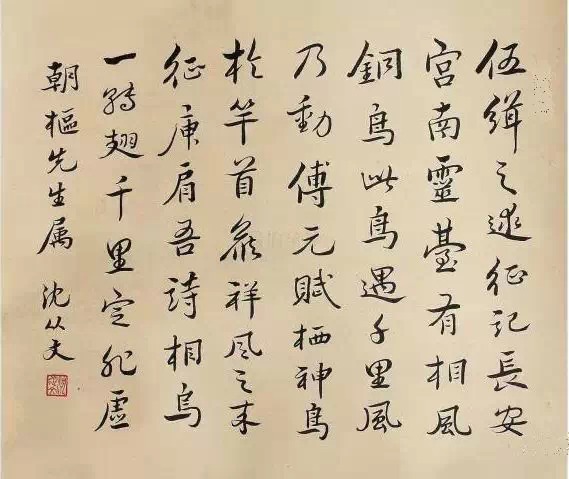
Appreciation of Shen Cong's calligraphy
Second, cultural literacy and calligraphy attainments. Generally speaking, the two are directly proportional to each other. As calligraphers, they have always been regarded as part of the "literati" from ancient times to the present. This is mainly because calligraphers have knowledge in literature, history, and philosophy. Literati and learning, calligraphers and literati, calligraphy and self-cultivation, etc., are all closely related. This is also a topic that the ancients talked about a lot. However, in modern times, some people always regard calligraphy as a simple "hand". It’s just a familiar technique.” The overall impression of today's calligraphy should be: "the enrichment of form and the degradation of connotation." Calligraphers focus on the effect of pen and ink, but downplay the essence of "lyric expression". Calligraphy is a product of traditional Chinese culture. The old traditional education and culture have become specialized knowledge today. Most calligraphers can only rely on their spare time to make up for their deficiencies in this area. Even after putting in a lot of effort, little was gained due to changes in the environment. Therefore, it is difficult to fully understand and grasp the rich connotations contained in calligraphy tradition.
The degradation of bookish style is also the biggest flaw of current calligraphy. Because of this, I think it is increasingly important to emphasize the close relationship between cultural literacy and the art of calligraphy. For example, Cai Yi, the famous calligrapher of the Eastern Han Dynasty, was not only a writer, but also knowledgeable in history, music, astronomy, and could also draw. His vast knowledge promoted his calligraphy art to perfection, and he has been praised in history as "insightful, refreshing and spiritual". The written text of the "Six Classics" was erected on a stone outside the gate of Taixue, and onlookers crowded the thoroughfare with students. With his high intelligence and extraordinary intelligence, he was inspired by accidental events to create the "Fei Bai" book, which had a great influence on later generations. His daughter Cai Wenji's cultural literacy comes from her family studies, and she is also good at calligraphy. As for Wang Xizhi, Wang Xianzhi, Yan Zhenqing, Zhang Xu, Yu Shinan, Su Shi, Huang Tingjian, Dong Qichang, etc., they are all capable of other arts or a wide range of knowledge fields. They are not general dabblers, but devoted themselves to exploration, and most of them have high achievements. . It can be said that there are very few calligraphers in the history of ancient calligraphy who can only write and do nothing else. The predecessors have repeatedly emphasized that "the power of calligraphy lies outside the book" and is not limited to "inside the book". This is the golden maxim derived from countless experiences and lessons.
Thirdly, the calligraphy is a painting of the heart and the cultivation of emotions. Generally speaking, the inner life of literati and the richness and complexity of love and hate emotions should be much higher than that of non-literati. In ancient times, most of the people who engaged in the art of calligraphy were scholar-bureaucrats and literati. It can be said that all literati have There was a strong "desire to write", and even the last feudal literati like Kong Yiji, who dipped his finger in water to write the four "hui" characters, still did not get rid of the psychological stereotype cast by this ancient culture. Obviously, in the long history of ancient China, calligraphy has been the closest companion of literati in the past dynasties. The literati felt fulfilled when they had a pen in their hands, and they could express their inner thoughts with the pen in their hands. In the process of creating her, you can appreciate the joy of creation, and in the process of appreciating her, you can appreciate the pleasure of aesthetics. From "calligraphy to painting from the heart" will inevitably lead to lyrical refinement, which can satisfy the most frequent and common spiritual thirst for art among literati. It can be said that the connection between ancient Chinese literati and the The art of calligraphy is deeper than that of other literary styles such as painting, music and even poetry.
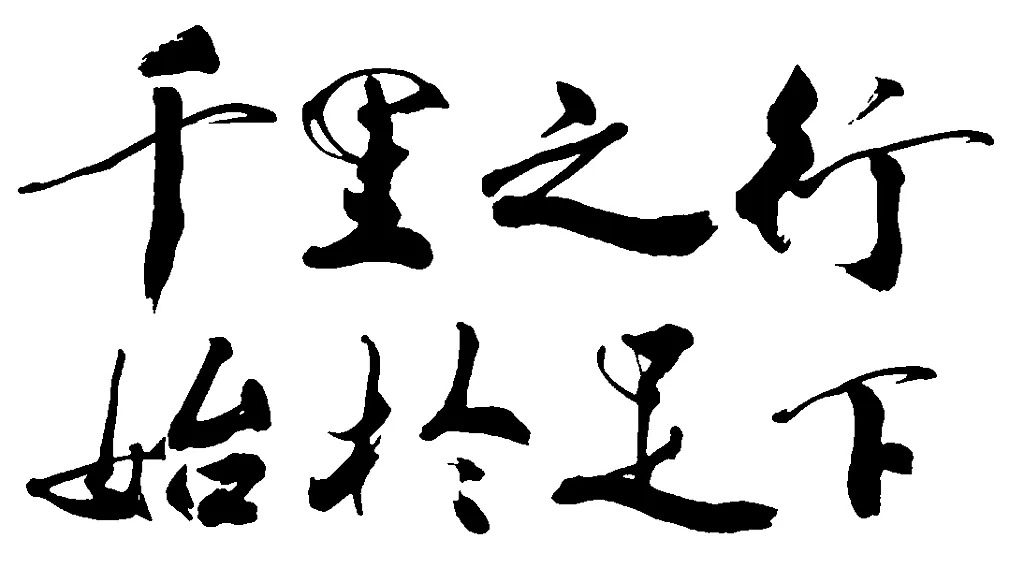
2. Philosophy
Chinese calligraphy can be said to be "one ink, a thousand things, a speck of dust". It has its own development system and always maintains its own uniqueness. "Yun", "Li", "Dharma" and other Chinese philosophical concepts .
"Shape and spirit" is one of the core categories of Chinese calligraphy. "Theory of form and spirit" has rich philosophical connotations. It is the derivative of the theory of form and spirit in ancient Chinese philosophy. The relationship between "form" and "spirit" refers to the relationship between human body and spirit in ancient philosophical thought. The fundamental question is whether form and spirit are inseparable and whether spirit is dependent on form, as well as the identity of form and spirit. Later generations extended him to aesthetics. Shen Kuo said in "Mengxi Bi Tan": "The beauty of calligraphy and painting should be understood by spirit, and it is difficult to find form." This means that if calligraphy and painting want to achieve the wonderful state, they cannot just start from " To seek the aspect of "form". "Shenhui" refers to the unity and fit of "things" and "I" to achieve the state of "things and I are the same". In this way, we can not only capture the spiritual characteristics of the "object" image, but also inject our own thoughts and feelings into the "object" to be expressed. Su Shi paid more attention to abandoning the body and praying for the spirit. In the poem before " Two Broken Branches Painted by the Master Book of the King of Yanling", he said: "When talking about paintings, they are similar in shape, and they are seen next to children. When writing poems, you must use this poem, and you must not know the poet." Emphasizing the importance of spirit is influenced by the Taoist concept of "form is born from essence", "only spirit is preserved,... and spirit is one", and the emphasis on "spirit". From the perspective of form and spirit, "spirit" is used as the quality and "form" is used. "Spirit" is the inner spirit that exists in "form". It requires calligraphers to understand, feel and capture it, so it must be "familiar with the heart". The process of "cooking" is also the process of "practicing".
The "theory of form and spirit" in Chinese calligraphy is a derivative of the "theory of form and spirit" in philosophy. In terms of grasping the relationship between form and spirit, due to different emphasis, some take form as the quality and spirit as the use, and form and spirit are unified; some take spirit as the quality and form as the use, emphasizing spirit and despising form. In terms of grasping and expressing form and spirit, Chinese calligraphy is a concrete manifestation of the above-mentioned view of form and spirit. Chinese calligraphy emphasizes "spirit" because "spirit" is the spiritual essence that dominates the form. It is said that "the spirit cannot live without form, and the spirit cannot exist without form", so "writing spirit " and expressing "spirit" are regarded as the highest expression. In addition to focusing on "spirit", Chinese calligraphy also pays more attention to "qi" and "rhyme".
From the perspective of the aesthetic nature of Chinese calligraphy, it focuses on the inner spirit of the aesthetic subject and pursues the unity of spirit and form, emotion and matter. In particular, the understanding of Qi and Rhyme is the core of Chinese calligraphy. "Qi" is originally a philosophical concept, and it is also a concept with complex connotations. In ancient Chinese philosophy, since the Spring and Autumn Period and the Warring States Period, the concept of "qi" has been used to explain the movement and changes of matter in nature, the generation of human beings, and their spiritual phenomena. "Qi" has become an aesthetic category in the art of calligraphy. Mencius proposed that we should be good at "nurturing Qi". He said: "I am good at cultivating my awe-inspiring spirit." "Haoran Qi" is a "spirit" that comes from personal moral cultivation. Mencius believed that if this Qi (i.e. spirit) can be "well cultivated", it will be "stuck between heaven and earth". This kind of "qi" "stuck between heaven and earth" is a "spiritual state" that comes from cultivation.
Ancient Chinese literature and art paid great attention to the connection between "qi" and "spirit". It is believed that it is necessary to "organize one's will and make peace", "clear one's heart and regulate one's energy" ("Wen Xin Diao Long·Shen Si"). It emphasizes that the creation should be in accordance with nature and cannot be forced; it pays attention to the artist's daily maintenance of spiritual "harmony", maintaining a calm mind and a comfortable spirit, which is very important for feeling and observing life and creating. The maintenance of "spirit" and "qi" is an important part of the exploration and creation of ancient Chinese literature and art. In literary theory, there is a saying that "spirit is the essence of Qi". Calligraphy also talks about "those who first win with Qi will have a brilliant spirit, and when it comes out on the paper, if the meaning is tender, it will be shallow and lifeless, and they will not be able to calligraphy or painting" ("Postscript of Poems on Paintings by Dadizi").
So, these are a bit too mysterious and too theoretical, so why do they fall into the words? The connection between "spirit" and "qi" in Chinese calligraphy is mainly reflected in the entire process from creative impulse, composition layout to ink writing. Shen Zongqian described it this way in "Gate Zhou Xue Hua Bian": "Wherever there is excitement, it will reach its peak, and its myriad phenomena are all unexpected at the beginning." "Qi" and spirit are unified. Therefore, the ancients said that "Qi disappears and the spirit is destroyed" ("Lun Heng·Ding Gui"). The unity of Qi and spirit is the expression of the calligrapher's own vitality and creative power. "Qi" in "vivid Qi Yun" refers to "spiritual essence" and has the same meaning as "Shen". "Yun" here means "charm" and "rhyme", and "qi" and "rhyme" are both intrinsic. The original meaning of the word "vivid charm", in our today's terms, is: vivid expression of poetry The "spiritual charm" of a text or text. "Vivid" is an adjective for "charm". "Rhyme" is both an aesthetic realm and an artistic method. "Rhyme" is the artistic realm required to be achieved by the aesthetic essence of Chinese calligraphy. It is used in In Chinese calligraphy, like spirit and meaning, it is also an important aesthetic category. Chinese calligraphers often regard "rhyme" as the highest aesthetic standard for calligraphy works. "Rhyme" in calligraphy has characteristics such as "poetry" and "music" Comparing, there are many similarities. If the "rhyme" in poetry is "without a word, it can be romantic"; the "rhyme" in music is "silent strings", "the sound is outside the sound"; then in calligraphy The "rhyme" is the "black and white melody", which is elegant and vertical, and is more wonderful than the pen and ink.
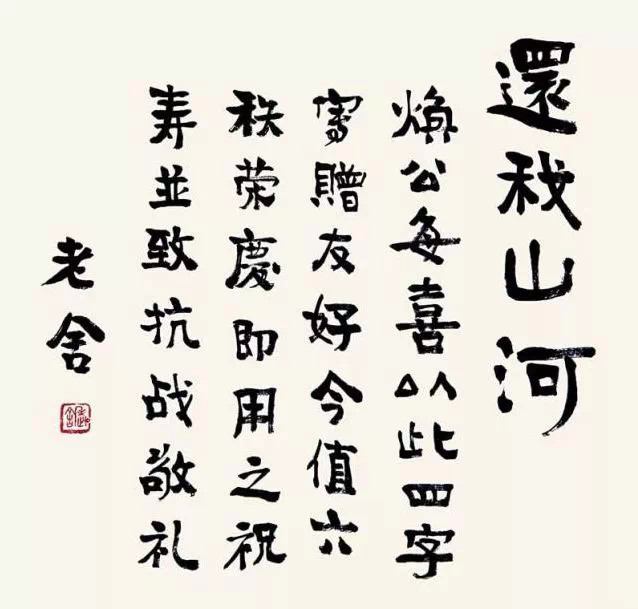
Appreciation of Lao She's calligraphy
3. Traditionality
The so-called "tradition" refers to the thoughts, beliefs, customs, habits, etc. passed down in the past. To understand Chinese calligraphy, only by placing it in Chinese traditional culture can we appreciate its charm. Since calligraphy is a traditional culture, it means that calligraphy is a complete and systematic writing method that has been passed down for thousands of years and needs to be respected and imitated by later generations. But you can't leave the tradition and create another one, otherwise it won't be called calligraphy. Then add a lot of restrictive words in front of the calligraphy. For example: popular calligraphy, modern calligraphy, artistic calligraphy.
1. Calligraphy is methodical
The so-called "law" means methods, techniques, laws and regulations. The dictionary explains that it has two meanings, "some rules enforced by the state" and "following the example". Since it is calligraphy, it is the law of calligraphy. These are mandatory rules that must be followed, otherwise it cannot be called calligraphy. To imitate is to imitate the predecessors. Regarding this issue, my opinion is that the calligraphy principles and calligraphy rules accumulated through the creations of thousands of years of sages must not be abandoned. We must first inherit and then innovate. I hope that Chinese people love and cherish tradition, and do not destroy its beauty, nor do they tease or ruin its beauty.
The content of law is very broad and can be divided into broad and narrow senses. In a broad sense, as Shi Tao said: "There is no way in ancient times, and the simplicity is not scattered. Once the simplicity is scattered, the law is born." This generally refers to "methods", "methods", "laws" and so on. The methods often mentioned in calligraphy are mostly methods in a narrow sense, such as brushwork, composition, etc. For writing, the most important things include: brushwork, structure, and composition.
1. Brushwork is considered to be of paramount importance in the techniques of calligraphy, and it is not easy to change through the ages. Calligraphy without brushwork would not be calligraphy, but just writing. There are also writing methods in the writing method, such as the " stirrup method ", which has eight characters: , press, hook, expose, resist, reject, guide, and send. The technique of writing is like the Eight Methods of Yongzi, which are also eight characters.
2. Structure, that is, "frame structure". In order to make the text with different shapes, different postures and different strokes present a vivid posture due to the connection and insertion of stipples. The most widely circulated ones include Ouyang Xun's "Thirty-six Methods" and Huang Ziyuan's "Ninety-two Methods". Among them are rowing, avoiding, supporting, crossing, turning away, giving way, rescuing, accompanying, hugging back, etc.
3. Composition, also known as layout, refers to the "formation and layout" of a work. Wang Xizhi's discussion of composition in "Inscribed on Mrs. Wei's Formation Picture" compares a piece of calligraphy to a battlefield, with generals, swords and guns. . In fact, it talks about the relationship between words and words and lines.
In short, the inheritance of law is the guarantee that calligraphy can ascend to the supreme throne of Chinese culture from the day of its birth, and it is also the guarantee that the life of calligraphy, a national culture, will continue and be stable. As for the techniques of pen and ink, you are all engaged in creation. From the perspective of the level of your works, there is no need to say too much. To say too much is to play a big knife in front of Guan Gong's gate.
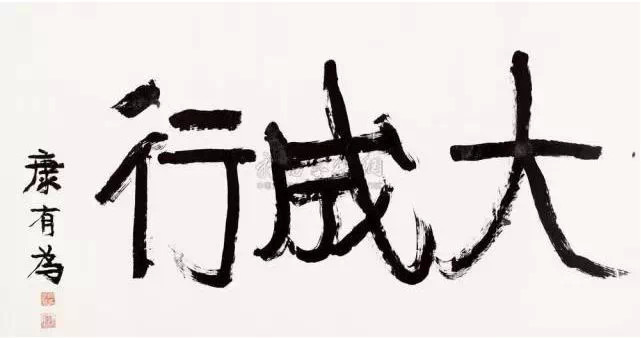
Kang Youwei's calligraphy
2. About inheritance
The biggest characteristic of learning Chinese calligraphy has been copying since ancient times, that is, people today write according to the methods of the ancients. It is in this way that the inheritance relationship of Chinese calligraphy that has lasted for thousands of years has been maintained. You may ask, where did the ancient laws come from? Of course, the ancients did not have laws before, but since the ancients legislated, future generations have not been allowed to produce ancient laws. This is the characteristic of tradition. Of course, today we say that future generations should create and develop, but creation and development must be based on inheritance. Only by standing on the shoulders of the giant of tradition can we achieve new heights. The great calligraphers of the past dynasties have all invested a lot of energy in learning and copying the excellent traditions of their predecessors, and even retired their pens and turned them into graves. It can be said that there is no calligraphy master who can become famous without learning from ancient times.
Calligraphy is a unique art of Han culture. It is one of the three quintessences of China (Peking Opera, Chinese Medicine and Calligraphy and Painting). In this regard, I am most opposed to "reform". I think reform will undoubtedly destroy national culture. If we want to develop, it can only be called "innovation". No matter how Peking Opera is reformed, it is inseparable from the original singing style, and the soundtrack is still mainly based on musical instruments such as qin, strings, board, and drums. For example, the "Modern Revolutionary Model Opera" has been refined for many years, but only in terms of clothing. "Innovation", but there is not much change in the most basic traditional feature-the singing; and practice has proved that the reform of model operas has failed. The reform of traditional Chinese medicine is mainly reflected in the "integration of traditional Chinese and Western medicine", and the most essential thing of traditional Chinese medicine is the basic aspects of "syndrome differentiation and treatment" - the four diagnosis and eight principles (the four diagnosis are inspection, smelling, questioning and palpation; The core content of the eight cardinal principles (e.g., exterior, interior, cold, heat, deficiency, excess, yin, and yang) has not changed.
As an art of calligraphy that has been practiced in China for thousands of years, it is even more dependent on tradition. This is mainly because the object of expression in calligraphy is text symbols, which are completely different from dramatic images or Chinese medicine theory. The symbols of writing changed from Liushu to Libian, and from Libian to Kaize. They have basically been finalized, which leaves little room for creativity for calligraphers. The formula of drama changes due to changes in the script, and traditional Chinese medicine changes due to different conditions, but calligraphy requires creativity under the condition that the text symbols are fixed. For calligraphy, the main way to inherit tradition is copying; for opera, the main way to inherit tradition is imitation. The two have different forms, but the meaning is exactly the same. If you have copied the calligraphy books hundreds of times, even if you are not a calligrapher, you will at least be able to write well; if you have "familiarly read three hundred Tang poems", even if you are not a poet, you will at least "can recite poetry without being able to compose it." Although copying and imitating may not necessarily make a famous artist famous, the originality and individuality of famous people are inherited from the tradition of copying and imitation. Don't be afraid of repetition when copying. In fact, every repetition is a new life, like shedding a skin and reborn. There is a saying in art that repetition is power. Beethoven's destiny is that the nine movements have been repeating a melody .
The purpose of copying is mainly to learn techniques and skills, but it also helps to cultivate enlightenment. The so-called "love his books and learn from his people", "learn his books and learn from his people". Due to the unity of calligraphy quality and character, when we copy the calligraphy of Wang Xizhi or Yan Zhenqing day after day, year after year, we can not only learn their brushwork, structure and composition, but also subconsciously, Consciously or unconsciously, you are infected by their charm or morals. Copy ancient calligraphy and cultivate your own magnanimity.
Although copying is the only way to learn calligraphy, calligraphy does not remain unchanged after learning from the past. Different people will study the same post, and the results will be different due to the different personalities of the people who study it. Even if the same person is studying the same post, his focus will be different when he is studying. Its degree may be based on its body, or its brush, or its movement of Qi, or its structure and distribution. When it is determined, the spirit of the practice will also focus on a certain end, so the result is not only the same as the original text. They won't be exactly the same, and they will definitely be different.
Copying includes "reading the post" (reading the post, also known as "yi lin") and "backing the post" (also known as "back lin"). Famous masters in history, such as Zhao Mengzhaoye, Dong Qichang, and even modern Yu Youren, Shen Yinmo, etc., all imitated the traditions of their predecessors, and then gained access to the house, broke out, and established their own business. Huang Tingjian said: "Taoist Dongpo has been studying "Lanting" for a few days, so his writing style is like Xu Jihai's. When he is drunk and dissolute, his will is clumsy and his handwriting is very thin and strong, just like Liu Chengxuan; in middle age, he likes to study Yan Lugong, Yang Fengzi's calligraphy is no less similar to that of Li Beihai. As for the roundness and rhyme of his writing, which brings wonders to the world with his articles, and the loyalty and righteousness that pervades the spirit of the sun and the moon, the good calligraphy of this dynasty should be ranked first." On the contrary, Zhang Rong of the Southern Qi Dynasty, his cursive script ignored ancient laws and was original. Qi Gaodi criticized him: "Why don't you learn the laws of the two kings ?" He said boldly: "If you hate your ministers, you will not have the laws of the two kings, and if you hate the two kings, you will not have the laws of the ministers." But history is Ruthless, the two kings will live forever, and Zhang Rong is still alive!
Learning calligraphy must start with copying, so you have to be like the ancients. If you are not like the ancients, you will lose the reason for calligraphy. This is the characteristic of traditional art. Every calligrapher must be half a literati, usually a craftsman. He must have the wonderful understanding of a literati and the skillful hands of a craftsman. If he only has the skillful hands of a craftsman without the wonderful understanding of a literati, he will not be able to create anything; if he only has the wonderful understanding of a literati but without the skillful hands of a craftsman, it will be difficult to create something. As good as it gets. Wonderful enlightenment comes from the cultivation and spirituality of literati, and skillful skills can be obtained from imitation and hard practice. Although craftsmen may seem mediocre, they are absolutely indispensable. What is a craftsman? It means that he is good at copying a certain style of calligraphy. Once he is allowed to leave and express some of his own ideas, they will be blocked by a wall. This wall is "culture".
In the process of learning calligraphy, some Dharma stickers handed down from ancient times can be approached from the perspective of "Dharma" and continuously mastered through copying. For example, the "two kings" are Yan, Liu, Ou, Zhao, Yu, and Wang. And if some calligraphers' works are also approached from the perspective of law, they will miss the point and imitate others. Therefore, we can only learn his thoughts and courage from the perspective of "meaning", and then appreciate the beauty of his soul and personality using pen and ink as the carrier. When learning this kind of dharma calligraphy, be sure not to imitate others, such as Zhang Xu, Su Shi, Er Da, Xu Wei, Fu Shan, etc. This is similar to the two great poets Li and Du. Hu Yinglin: "Li and Du are not good or bad in terms of their talents, but the style of the Ministry of Industry is clear and secret, and there are methods to be found; Qinglian Xinghui's evaluation cannot be achieved without learning." In layman's terms, learning from the first category of calligraphers The calligraphy of the second type of calligrapher is operable; while the calligraphy of the second type of calligrapher, such as Li Guang's calligraphy, appears and disappears without trace. Therefore, we must use Qi, emotion, and intention to control the pen in our hands instead of relying on "Dharma".
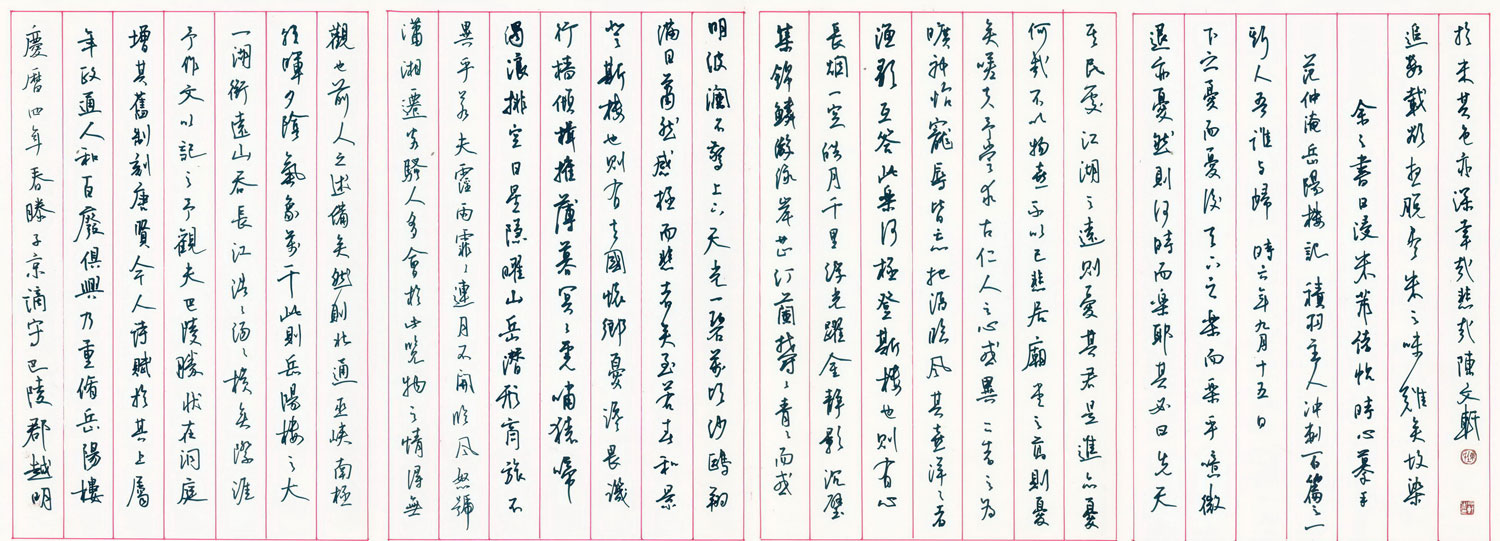
3. About innovation
It has been said above that "if it is not similar, it will lose its purpose as calligraphy." Qi Baishi once said: "Those who learn from me will live, and those who resemble me will die." Therefore, we cannot be completely like the ancients.
Calligraphy was formed in a specific cultural background. Its mature art form, stable aesthetic characteristics and lyrical style embody the psychological structure and aesthetic appeal of the Chinese nation. As a traditional culture, calligraphy is a highly stylized art. Just like the rhythmic poetry of the Tang Dynasty, you must write according to the meter and the rhyme must be consistent. Otherwise, no matter how beautiful your words and sentences are and how high the artistic conception is, it is not a rhythmic poetry. We know that Chinese poetry was formalized in the Tang Dynasty, and rhythmic poetry appeared, which was divided into Wugu, Qigu, Wulu, Qilu, Wujue, Qijue, etc. We can certainly think that rhythm makes poetry a "rigid" form, but We also have to admit that the first-class poets, such as Li Bai and Du Fu, were all created from meter. Moreover, rhythm has pushed Chinese poetry to a peak, and it is a peak that can never be surpassed. We have to admit that the prosperous era of rhymed poetry after the Tang Dynasty is gone forever. It can be said that poetry in any future era will never be better than the Tang Dynasty. Regarding poets, Li Bai can never be surpassed. It is truly unprecedented. Formula is a symbol of the maturity of an art. Traditional Chinese art will form a certain formula after it is highly mature. A high-level summary, refinement and sublimation of life, Chinese artistic procedures are full of strong oriental nature. Of course, it also has hidden dangers.
Formalization and stylization can certainly constrain artistic innovation. But programs cannot constrain genius, nor can they elevate mediocrity to the status of an artist. If he is really an artist, the program will be his slave; if he is not an artist, his works will be mediocre with the program, but he will still be mediocre without the program. For example, when it comes to writing poetry, even if you are correct in both oblique and oblique strokes, you still can't write like Li Bai; take calligraphy, even if you are familiar with the "Eight Methods", you can't write like Wang Xizhi. Of course, this "you" does not refer to all of you here, but to those mediocre people.
Traditional art must be integrated with changes. How to put it? Neatness is its form or formula. For example, Peking Opera is also a stylized art, with "sheng, dan, jing, mo, and ugliness" and "singing, reading, doing, playing, and working". One move after another, one after another, you must follow the performance handed down from your ancestors. You can have your own personality and be creative, such as the genre of singing. But you must be "Mei Shang Cheng Xun", otherwise no matter how good you sing, it is not Peking Opera. If you have no source, you can only be called singing.
The same is true for calligraphy. You must be "Yan Liu Ouzhao" and you must have inheritance, otherwise, it is not called calligraphy. All masters struggle to gain freedom from inheritance and brew changes from order. Programs are a dead method, and they all depend on people being able to use them effectively. As for Peking Opera, Shang Changrong, the current chairman of the Chinese Drama Association, belongs to the Jin School, Du Jinfang belongs to the Mei School, and Li Shiji belongs to the Cheng School. If you don't believe me, let's take a look. There is no inheritance in calligraphy. When some people leave certain positions, they will definitely "wash away the sand", which is fair to say. It's like when we watch a football match, people who don't understand see the athletes running around and flying around the field, as if there are no rules and regulations, but in the eyes of experts, they are all following the rules. Otherwise he would have been sent off long ago. It can inherit tradition without violating fashion, and it can innovate without disadvantages. This is the fundamental principle of calligraphy innovation. Therefore, it is difficult to innovate calligraphy. The difficulty is that you have to create within the established rules. I describe her as wearing a long gown and dancing with the style of the times. Therefore, I suggest that if you want to innovate, wait until you are sixty years old. Don't be impetuous, don't be hasty. Confucius said in his self-cultivation experience: "At seventy, you should follow your heart's desires without exceeding the rules." This is the ultimate state of a moralist and an artist. The creative activities of calligraphy are all in these seven characters. Those who "follow their heart's desires" often "go beyond the rules", and those who "do not go beyond the rules" often fail to "follow their hearts' desires".
Calligraphers must break this contradiction. But this is easier said than done. Confucius was a saint who reached this state when he was seventy years old and was about to die. I said sixty was ten years too early. Therefore, there is one rule for becoming a master: you must live a long life. This is different from the West, where artists such as Beethoven, Van Gogh, Picasso, Monet, and Mozart all became famous at a young age. You see, none of those who won prizes in children's calligraphy and painting competitions became masters of calligraphy and painting, and everyone in calligraphy and painting was just a late bloomer. There is a passage from Zen Buddhism: “When the old monk practiced Zen 30 years ago, he saw mountains as mountains and water as water. Later, he saw mountains as mountains and water as water. Now he sees mountains as mountains and water as water. "What is this? It means entering the Dharma, leaving the Dharma, and entering the Dharma. Or called the three stages of raw-cooked-raw. The practice of calligraphy takes a lot of time and energy, and you have to be willing to sit on the bench for decades. "If you don't go out to Tai Chi for ten years, you won't do calligraphy for twenty years." Only in this way can we be "impossible" and have all kinds of methods at will.
Learning calligraphy is like mountain climbing. You can see new beautiful scenery every time you go up a level. People at lower levels generally cannot understand and experience the aesthetic feeling of high levels. For example, every time we go up a level on Mount Tai, the world in front of us will become more exciting and magical. So it inspires you to keep climbing again. As time goes by, age increases, and cultivation accumulates, a calligrapher can gradually become a knowledgeable person, a noble person, a person who loves life, and a person who is constantly striving for progress. Both people and calligraphy have reached a mature state, which is called "both people and calligraphy are old" (Sun Guoting's words). Yuan Mei has a poem with a very good artistic conception for your reference. "It is difficult to write down a hobby, but it is easy to change a poem after a thousand changes. Grandma is still a girl with a bun, and she is not allowed to look at her makeup before it is done." Calligraphers should have such a realm and feelings.

Wei Qihou's works
Tanfuzhai Collection
4. Aesthetic characteristics
Confucius has a saying that "benevolence is beauty." I think this is a very high summary of Chinese aesthetics. If Western art attaches great importance to external modeling, then Chinese art, especially calligraphy, attaches great importance to inner connotation. Westerners study sculpture from the perspective of anatomy, painting from the perspective of perspective, modeling from the perspective of geometry, and drama from the perspective of history... Using art to shoulder science is one of the characteristics of Western culture. China is different. In a cultural environment where Confucianism and Taoism complement each other, Chinese people are born with poetic thinking and artistic attitudes. Chinese calligraphers know how to obtain the aesthetic experience that "can only be understood but cannot be expressed" between "similarity and dissimilarity".
I watched TV yesterday. China’s table tennis is the world champion again. Even the rules of the World Table Tennis Championships are constantly revised by China, but China is still the champion. What's the problem here? Why can't we advance in football? It can even be said that it will never be possible. I don't think some people are talking about the issue of national constitution. Of course, there are also ethnic issues. This is our national inanimate art. . Westerners are all about science and all sports. Germans use rulers to measure nails, while our carpenters use eye sights and strings to hang. We are pan-culture and pan-art. We must admit that there is a gap between us and the West in terms of technology and highly confrontational sports such as football and boxing, but in sports with an artistic component, we have great advantages. Such as table tennis, gymnastics, and diving. The Palace of Versailles in the West is a geometric building, with symmetrical and balanced fountains and neatly cut garden lawns. Chinese gardens emphasize mountains and rivers, dark willows and bright flowers. You can see the natural harmony between heaven and earth in Suzhou gardens. Foreign shooting emphasizes accuracy and precision. What is this? It is a mathematical concept. China's guns and sticks emphasize "fancy fists and embroidered legs, and a beautiful fight." What is the concept of beauty? It is an aesthetic concept.
Chinese calligraphy is not reasoning, it is philosophy. This is the main characteristic of Chinese art. Some people always like to apply Western aesthetic standards to measure Chinese calligraphy, such as shapes, lines, and visual impact. Some people organize exhibitions called "visual feasts" and "visual games". I can't say that these are uneducated, but at least they are It does not undertake a deeper cultural mission and lacks the spirit and connotation of culture... This aesthetic method cannot actually truly understand Chinese calligraphy. There is a cultural environment problem here. If you have never been to Qianmen Dashilan, you will certainly not understand Chinese Peking Opera. If you do not take a walk on the Champs Elysées, you will not understand foreign symphonies. While foreign ones can be explained in words, Chinese ones can only be understood. You see, we Chinese can take first place in foreign competitions when we learn violin, practice piano, and sing opera. On the other hand, if you ask foreigners to learn Chinese calligraphy, they will not be able to learn it in three lifetimes, let alone one lifetime.
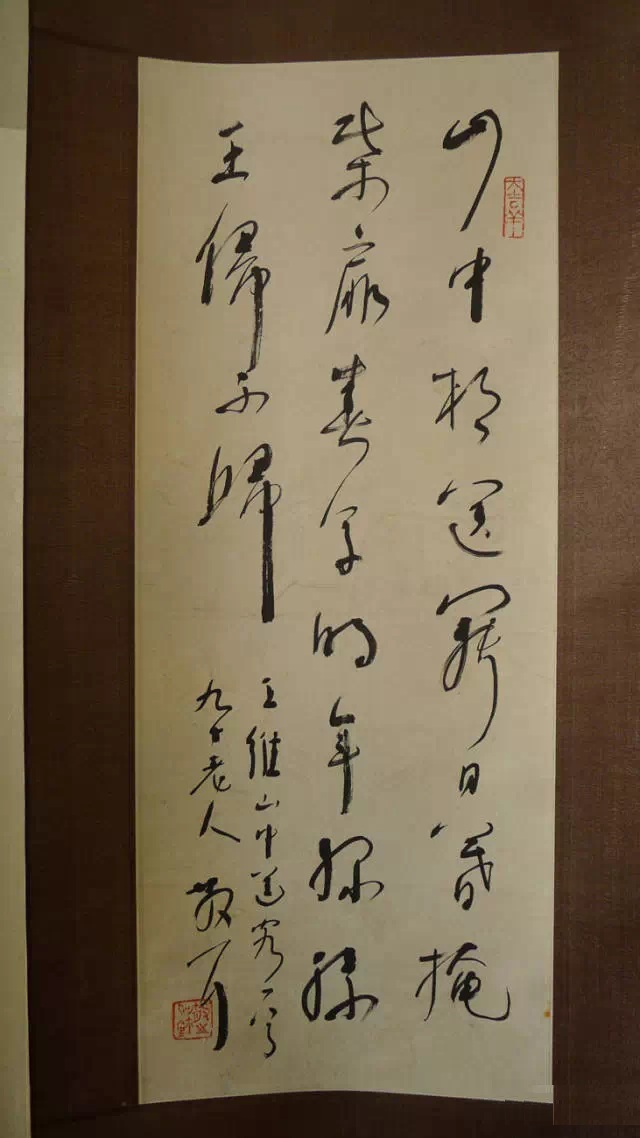
Lin Sanzhi's calligraphy
Tanfuzhai Collection
1. The claws of the dragon in the clouds are not blurry
Chinese calligraphy has its own long history and profound tradition, and learning calligraphy must follow the traditional direction. Calligraphy is a philosophical art and is abstract, but it is by no means an abstract art. I object to describing calligraphy as "abstract symbols", "abstract shapes", etc. Using Western theories to explain Chinese calligraphy is inconsistent with traditional Chinese calligraphy theory. There are many theories about the image of calligraphy in Chinese calligraphy theory, such as "dragon leaping over the sky gate, tiger crouching in the phoenix pavilion", "thunder falling from the stone", "leak mark in the house", "cone scratching the sand", etc. So what is calligraphy? It is the abstraction of images - it can arouse people's imagination; it is the abstract image - it can arouse the association of images. It cannot be explained by Western and modern abstract theories.
Calligraphy is hazy and lively, broad but solid, full of strangeness and ever-changing, allowing people to "think about it". As for foreigners, "As soon as the iron piece is twisted, the end of the rope is twisted, no one dares to say a word, because they are afraid that people will say you don't understand art." In fact, it is all bluffing. Wang Wei has a poem called "The sky is drooping in beautiful colors". He is writing about Xi Shi, which means that beauty is cherished by the world. To put it bluntly, everyone loves to see beautiful things, so don’t take them to make sense. The West simply does not have the vivid and rich image appeal of Chinese calligraphy. Calligraphy turns the emotions contained in an individual's body and mind into a tangible, colorful, rhyming, and shocking crystallization. In the abstract and changeable lines of calligraphy, life accumulates, condenses, and vibrates. Each word is a "unit of life".
Chinese tradition calls "abstraction" in calligraphy "meaning". The term "freehand brushwork" in the history of Chinese art is very important and is a unique aesthetic concept. The lines in calligraphy express the emotional rhythm and inner voice of the calligrapher. Since Zhang Zhi, classic calligraphy has been combined with literature. It is in this sense that Western abstractionists do not understand. For abstract art, there are no literary norms, but the tradition of calligraphy can never be separated from literature, emphasizing the unity of font and style, and the unity of calligraphy momentum and literature. Only when the two are combined into one and "fit the mood on paper" can a masterpiece appear. The function of calligraphy is to "shape sorrow and joy", and the essence of calligraphy is not abstraction. Cursive script is recognized as the most abstract line, and Qianlong used this sentence when commenting on Huaisu's crazy cursive script, which is very meaningful and illustrative. He said: "The dragon's claws in the clouds are not blurry!"
This "Dragon Claw in the Cloud" is an illustration of the abstract nature of Chinese cursive writing. But it is "not vague" and has a definite image, so it is different from the West. This is a very wise sentence. It comes from a debate about poetry during the Kangxi period. "Qiantang Hongri Fang Sisheng has been at the gate of Xincheng (Wang Yuyang) for a long time. With Yu Yu, one day, they were discussing poetry at Sikou (Wang Yuyang)'s house. Rifang Si Fang was thinking about illness and the customs of the time were unstructured, and said: 'Poetry is like a dragon. It has no claws, horns, scales or hyenas on its head and tail, so it is not a dragon." Si Kou said: "Poetry is like a divine dragon, whose head is visible but not its tail, or where only one claw and one scale are exposed in the clouds. How can the whole body be safe? It is the ear of a sculptor and painter. ' Yu said: 'The divine dragon changes in flexion and extension, and has no fixed body. If you see it in a daze, you will point to its scales and claws, and the head and tail of the dragon are intact, so it seems to be there. If you stick to what you see, you will think that the dragon is there. , but the carver has words.' The Japanese thought was convinced." The claws and horns on the head and tail are all natural, which is naturalism. There are no claws and horns on the head and tail, which is abstractionism. Only when one can see the head but not the tail, or a claw or a scale is exposed in the clouds, is Chinese art, art that is "between abstraction and concreteness". This is true for poetry, and so it is for books. Therefore, it would not be an exaggeration to say that "the dragon's claws in the clouds are not blurry" can be said to be a summary of the entire Chinese art. Of course we will admire the sculptures of "David", "The Thinker" and "The Discus Thrower" in ancient Greece and Rome. (These names are not very artistic. When Zhu Yuanzhang was in trouble, an old beggar gave him a bowl of soup leftovers in a ruined temple. He ate it deliciously. When asked what it was, the old beggar could come up with a name easily. Called "Pearl Jade White Jade Soup") The precise bones and bulging muscles in Western sculpture. However, if you compare it with the several natural animal statues in front of the tomb of Huo Qubing of the Han Dynasty, you can figure out which nation understands art better.
2. "Books are paintings from the heart"
Calligraphy is the art of the soul. If you trace the origin, you can see it on the pottery of Hemudu, on the bronze tripods of the Shang and Zhou dynasties, on the Buddha statues of the Longmen Grottoes, and on the bricks and tiles of the Qin and Han dynasties, and the poetry of the Tang and Song Dynasties.
The longest and greatest influence on calligraphy is Confucianism and Taoism in traditional culture. Confucianism is mainly about benevolence, righteousness, loyalty and forgiveness, and the golden mean. It affirms the beauty of nature, emphasizes the practicality and utilitarianism of beauty, and emphasizes the unity of beauty and goodness. Taoism emphasizes super-utilitarian inaction, advocates "returning to nature", stresses romanticism, and believes that aesthetics should be separated from practicality, and people should not deliberately pursue beauty combined with utilitarianism and satisfy physical pleasure. True beauty should be a spiritual state of conforming to nature, not being bound by the outside world and entering freedom. This kind of artistic aesthetics is deeper than Confucianism, so it will have a greater impact on later generations. To reach this state of Taoism, there are two necessary conditions, one is leisure, and the other is money.
Regarding artists and money, I do not object to calligraphers following the market. Calligraphers should integrate with the market, but calligraphers should keep a distance from the concept of "time is money and efficiency is life." It is well said in "Cai Gen Tan": "Mountains and forests are resorts. Once you fall in love, you will become a city; calligraphy and painting are elegant things, and if you are greedy and crazy, you will become a businessman. For those who have an untainted heart, the realm of desire is like a fairyland; if there is love in the heart, , the happy state turns into a sea of suffering." Therefore, to become a true calligrapher, one must have rich knowledge, sufficient time, a relaxed state of mind, and a critical eye. Calligraphy is a leisurely profession. The current price of a calligraphy cannot indicate its true value in the future, nor can a calligrapher's position be his true status in history.
Why is it said that someone is a writer? He writes for life. He writes whatever others ask him to write, and he writes whatever others ask him to write. Lu Xun believed in the article "What Happened to Nora After She Left" that only with economic autonomy can we talk about personal independence and freedom of thought. Lu Xun's famous saying in this article is "Money is the dung that cultivates flowers." Money itself is dung, but it cannot do without it. A flower must grow on it. But dung is never flowers and fruits. Real artists don’t want to be famous or enjoy themselves. All they want is greatness. Art, like truth, can never be exhausted. That is to say, all artists in the world end up staying halfway to art. They are a group of people who are in the eyes of ordinary people. There are people who are mentally deficient. And they have a fire in their hearts, and this fire that inherits civilization often burns itself.
To sum up, the common aesthetic concepts of the above two schools of calligraphy are expressed in three aspects, namely: simplicity is beauty, charm is beauty, and harmony is beauty.
Simplicity is beauty, that is, "Great music must be easy, great gifts must be simple", "A loud voice must be rare, and an elephant cannot be seen". This is the expression form of most traditional Chinese arts. For example, Peking Opera: There is no scenery on the stage; except for a table and a few chairs when necessary, there are not many props and scenery. Therefore, when an actor opens a door, he cannot see the door; when riding in a carriage, he cannot see the car; when leading a horse, he cannot see the horse. There is a real resemblance in the dissimilarity; the falseness is the realism. Who can say that this is not real art! Calligraphy is so simple that it only has black and white, only dots and lines, but it can create emotion, meaning in form, and graceful charm. Zhang Huaiguan of the Tang Dynasty said in an article "On Characters": "In writing, a few words can make the meaning come true; in writing, one word can reveal the heart, which can be said to be a simple way." - It takes several words to express a meaning in words. Or a few sentences; as for calligraphy, writing a single word can reveal the author's soul, and it has truly achieved the simple truth.
Qi is the beauty. In ancient calligraphy theory, Qi often refers to the situation, style, spirit, and weather. It refers to the active spiritual posture of the work, which is a basic factor in the beauty of calligraphy. Wang Xizhi said in an article dedicated to calligraphy that calligraphy "is so powerful that it can be charming." Rhyme is different from Qi, and originally refers to a harmonious and pleasant sound. Yun is used in calligraphy, which means that the stipples, characters, and lines of the product are properly matched and evenly arranged to form a harmonious, beautiful, powerful, and rhythmic whole. The beauty of calligraphy is the compound of Qi and rhyme. If Qi is what Sun Guoting said in "Shupu", "the poor and abnormal are at the end of the hair", then rhyme is what he said in the next sentence, "the mood is on the paper". Qi and rhyme are actually complementary and inseparable. Liu Xizai, a literary critic of the Qing Dynasty, highly praised the beauty of calligraphy. He said in the book "Art Summary. Calligraphy Summary": "High rhyme and deep emotion, solid quality and majesty, one cannot make a book without the other." He further discussed the relationship between calligraphy and personal cultivation, to the effect that the charm of calligraphy should be the expression of personal soul. Otherwise, even if the work survives turbidity, it will be nothing more than a reflection of others.
Neutralization is beauty Neutralization is an ethical and moral norm proposed by Confucianism. In terms of literary and artistic creation, the general meaning of the beauty of neutrality is to be restrained in expressing emotions, and to deal with the relationship between the artist's emotions and objects and situations in a harmonious and appropriate manner. What it pursues is the artistic conception formed by the combination of subject and object in works of art. Neutralization is not dullness, calligraphy is the expression of one's state of mind, and Chinese health science emphasizes tranquility. "The best mood is tranquility, the best doctor is oneself, and the best medicine is time...". Therefore, calligraphy is opposed to "crude, wild, wild, and vulgar". That's not beauty, it's an ugly book. The unrestrainedness in calligraphy means willful indulgence, but it can be indulged and controlled; it is seeking adventure and taking risks, but it can turn danger into safety. For example, Wang Duo in the late Ming Dynasty and early Qing Dynasty said that his calligraphy was "raising his feet, doing somersaults, and riding the clouds and mist into the sky." Finally, he captured them one by one, and after struggle and twisting, they became scattered and flying quickly. Neutralize the momentum. Another example is Zheng Banqiao's calligraphy, which people call "streets paved with stones". There are a mixture of running script, official script and cursive script in the book, but it is mixed but not chaotic, the changes are not abrupt, and the irregularity is blended in the wonderful taste of harmony. Just like participating in the Olympics, the rules of gymnastics are fixed, just like tradition. In this rule, everyone can still make new "thrilling" moves based on their personal quality level, but the prescribed moves must be done, which is the difference. Laws, issues, etc.
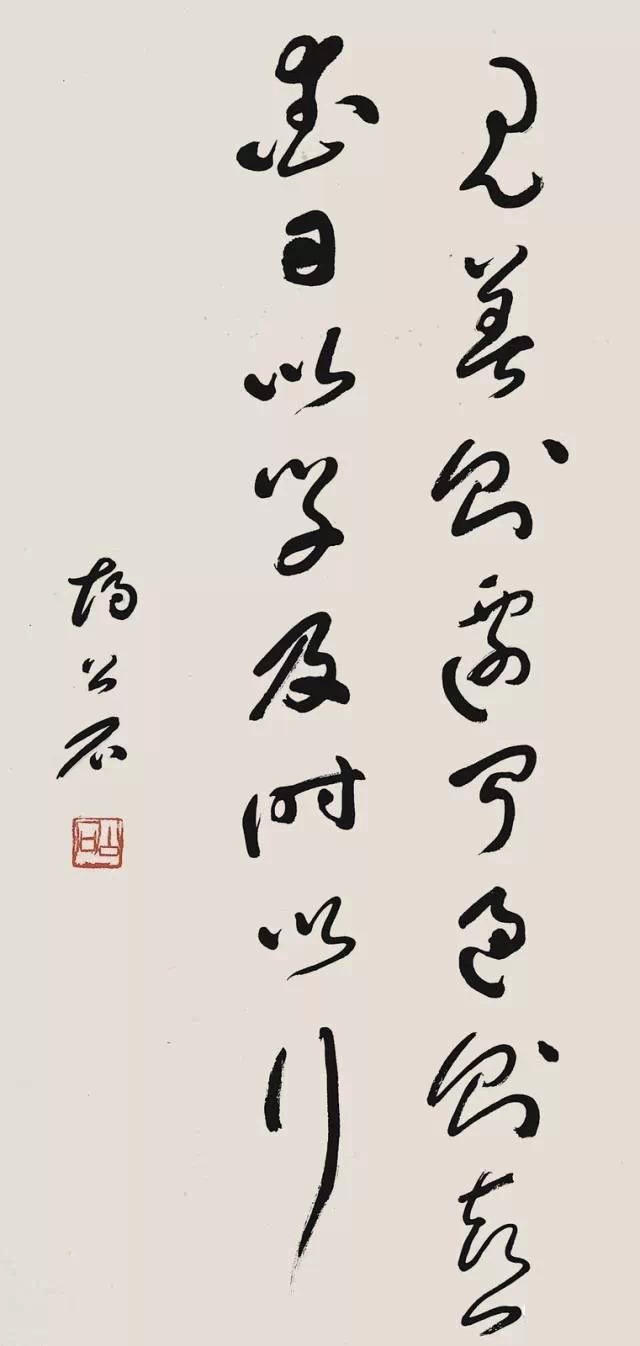
Hu Gongshi calligraphy
Tanfuzhai Collection
3. "Books are more valuable than people"
Whether book quality and character are consistent is a matter of endless debate. I have always firmly believed that judging the quality of calligraphy based on character is the biggest difference between Chinese calligraphy and all other arts, and of course the biggest feature. Songnian, a native of the Qing Dynasty, said it well: "In calligraphy and painting, the most important thing is character, and the integrity is excellent. Not only does everyone value his pen and ink, but he also admires his person." Zhu Hegen also said: "Academics is just a skill, but it is determined. Quality is the first step." Classic calligraphy works are integrated with their character cultivation and cultural accumulation. It can be said that it has become a tradition and formula in calligraphy theory to closely link calligraphy with the calligrapher's personality and conduct. If you don't understand this, you don't understand calligraphy. The way of calligraphy is the way of life. This is the beauty of calligraphy. The art of calligraphy itself contains the essence , energy, and spirit of heaven, earth, and people, including humanistic intentions and personality. Reflects character, human heart, personality, and humanity.
For example: Yue Fei was a loyal military general who dedicated his life to the country on the battlefield. It was probably impossible for him to have more time to write. However, there are two versions that have been handed down to this day, one is "Diao Ancient Battle Text" and the other is "Shi Shi Biao". After research, it was found that it was not Yue Fei's ink, but the calligraphy was very good, so everyone would rather think that it was Yue Fei's original handwriting that has been handed down to the world. There is also Yan Zhenqing. I asked a beginning calligraphy student of mine to read the "Sacrifice Manuscript", and his impression was that it was confusing. Of course, they don't know much about calligraphy, so why do we calligraphers call it the second line of calligraphy? It's because behind the "dazzling" handwriting, you can see the author's intensely beating state of mind, which brings us aesthetic tremors. On the contrary, Zhang Ruitu's calligraphy in the late Ming Dynasty has a remarkable rise in structure and momentum. Most calligraphers believe that it is advisable to evaluate it from an artistic perspective. But because he was the godson of Wei Zhongxian, later generations despised him and despised his calligraphy. Although some people feel sorry for him and believe that the quality of books and his character should be evaluated separately, even these people who are trying to be "just" do not write his words. There is also Qin Muhui, whose calligraphy is also good. The Song- style characters in our computers today first came from his calligraphy. We know that Chinese calligraphy has always been named after people, such as Yan Zhenqing's Yan style, Liu Gongquan's Liu style, etc., only Song style, although beautiful and practical, can never be called Qin Mu Hui style.
Some people think that calligraphy is underestimated because of people. From an artistic point of view, the value of calligraphy itself has been devalued, which may be a pity. However, writing is a gentleman's art. Appreciators must think of the author's character when looking at the book. It is difficult for them to completely separate the two.
Seek the old rather than the new. For art in general, it must be based on something new. Except calligraphy. The ancients said about calligraphy: "One must have high moral character, and the other must learn from the ancients." There is a saying in Chinese art that "art is as good as ancient and modern." Calligraphy works have always been evaluated based on their level. No one has ever used old or new terms to evaluate calligraphy works. measure. The ancients said: "The ancients word knot is passed down from generation to generation, and it is difficult to use the pen through the ages." You can look at the auction market. The older Chinese paintings and calligraphy get, the more expensive they are. A few lines of calligraphy by ancient people can fetch sky-high prices, but today's masters can't even match it for a fraction. Anyone who deliberately seeks novelty in calligraphy will not live long. Art is different from science. Science can start from the highest level reached by its predecessors. If it succeeds, it can climb higher. Just like in sports competitions, there will always be people who continue to break the "world records" of the past. Past achievements and achievements can only be placed in books and displayed. Museum , but art is different. Masterpieces in history will stay young forever, and calligraphy art is even more obvious. Reading Copernicus' Theory of Celestial Movements may be very nerve-wracking, but appreciating "Lanting Xu" will definitely make you feel better. of pleasure. Therefore, I believe that learning calligraphy must pursue the ancient style. How to embody the spirit of the times? You can rest assured that the style reflected in the era in which contemporary calligraphers live will naturally distance themselves from their predecessors. They must pursue the natural expression of the times, rather than deliberately pursuing it. The best state of calligraphy creation is to combine the old with the new, neither old nor new, see the old and see the new, and use the old and the new. It always maintains a causal relationship with the tradition that is inseparable and inseparable, and at the same time creates a kind of inseparability. , a natural realm that seems to be true, only then can the theory be accumulated and become more refined, the Qi be refined and refined, it has been brewing for a long time, the fire is perfect, and it can be obtained unexpectedly and naturally.
Finally, I would like to say a few words about the future of calligraphy. Calligraphy shuttles through the tunnel of time, and with its unchanging cultural tone, it derives a variety of life styles, making the different development periods of Chinese civilization three-dimensional and rich. It makes Chinese civilization proud and proud. It is precisely because of her antiquity that she appears young; precisely because of her thickness, she possesses cultural elements that cannot be subverted. Her experience and brilliance are the yesterday, today and tomorrow of our nation. She is a visible link that connects the splendid civilization of the Chinese nation for five thousand years. I believe that the future of calligraphy will be better.

